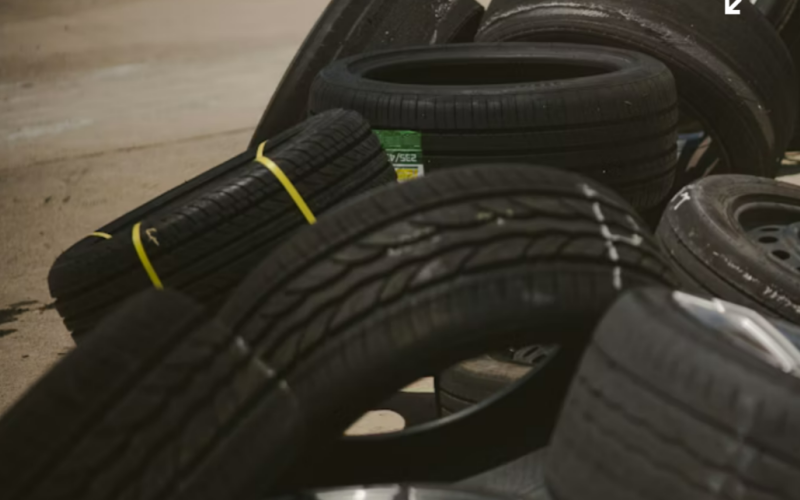When to Replace Car Tires
For drivers, few things are more important than safety. But we care about performance too. So, it's kind of strange that we often overlook the role of tires in both of these. The following is our advice for how to ensure that the tires on your classic car wheels keep your much-loved vehicle on the road.
Safety First!
Your car's tires help your vehicle grip the road. Proper traction allows you to accelerate, brake, and steer safely. This is how they do it:
- Traction and Stability: Traction is the friction between your tires and the road surface. It's what keeps your car stable and prevents it from skidding. Whatever the road conditions - dry, wet, icy, or snow-covered - good traction is vital for safe handling.
- Braking Distance: This is the distance it takes for your car to come to a stop when you apply the brakes. Worn-out or improperly inflated tires can significantly increase braking distance.
- Steering Responsiveness: Tires with good grip allow for precise handling. They enhance your ability to control the car. For example, if you need to swerve to avoid an obstacle, your tires enable you to do this safely.
- Hydroplaning Prevention: Hydroplaning is what happens when your tires lose contact with the road in wet weather. Tread patterns on tires help channel water away from the tire's surface. This reduces the risk of hydroplaning.
- Handling in Adverse Weather: In adverse weather conditions like rain, snow, and ice, the right set of tires can make all the difference. Winter tires offer better traction. They also improve handling in cold and snowy conditions.
Factors That Affect Tire Performance
So, tires are vital to keeping us safe. But what can compromise their ability to do this?
- Tread Depth: As your tires wear down over time, their tread depth decreases. Reduced tread depth means less traction. This is why you should check and replace tires when their tread falls below manufacturers' recommendations.
- Tire Age: As tires age, the rubber can become brittle, leading to a higher risk of blowouts and reduced grip on the road. Many experts recommend replacing tires after six years, regardless of their tread depth.
- Inflation Pressure: According to the NHTSA, a total of 622 people died on the road in tire-related crashes in the US in 2021. Tire pressure is one of the factors that can lead to tire failure. You can get a flat tire, a blowout, or tread can come off your tire as a result of incorrect tire pressure. Too little pressure causes the tires to overheat. Too much pressure can reduce traction and handling. But maintaining the correct pressure can extend the average life of a tire by 4,700 miles. It will also improve fuel efficiency. So that's why correct tire pressure is important. Maintaining this might save your life, and will definitely save you money!
- Tire Damage: Cuts, punctures, bulges, or sidewall cracks can compromise the performance of your tires. When you see these, it's time to replace the tire.
What You Can Do: Best Practices
Routine maintenance can help your tires last longer and do their job better. Here are some key maintenance practices:
- Regular Inspections: Inspect your tires regularly. Look for signs of damage, irregular wear, or foreign objects embedded in the tread. Inspect the sidewalls for any bulges, cuts, or cracks.
- Tire Rotation: Tire rotation is where you regularly swap your tires’ position around. The point of doing this is to ensure the wear on them is even. Doing this will make your tires last longer and reduce the chances of a blowout. Your car manual should come with a suggested rotation schedule.
- Wheel Alignment: If your tires are properly aligned, they make uniform contact with the road. Misalignment leads to poorer handling and uneven wear on your tires. For this reason, wheel alignment should be checked regularly.
- Balancing: Balancing your tires ensures even weight distribution, preventing vibrations and uneven wear. The mechanics will normally balance you tires when you replace them or get them rotated. If you experience vibration while driving you should get your tire balance checked.
- Seasonal Tires: Using seasonal tires is also a good idea. You can buy winter, summer or all-season tires. These specialized tires provide superior performance and safety in specific weather conditions.
The Impact of Tire Technology
Unsurprisingly, technology has also begun to impact the safety and performance of tires. Here are some examples:
- Tread Design: Modern tire tread designs have done a lot to enhance grip and water evacuation. This results in improved traction and shorter braking distances.
- Run-Flat Tires: In the past, if you got a puncture you were often stuck a long way from home. Now, run-flat tires mean that you can continue to drive, for a limited distance, even after a puncture. This allows drivers to get to a safe location where they can change their tire.
- Tire Pressure Monitoring Systems (TPMS): TPMS is now a standard feature in most vehicles. TPMS continuously monitors tire pressure. If it drops below a safe level the system will alert you. This helps you always maintain the right tire pressure.
- Noise Reduction Technology: Noise-reducing tire technologies improve ride comfort and reduce road noise. This enhances your enjoyment of driving, and safety.
So, hopefully you now appreciate that your tires are not just round pieces of rubber. They connect your vehicle to the road so it’s essential to maintain them properly. Why not take a look at your tires today. If you have any doubts or concerns, get in touch with us and we'll be happy to help out.
FREQUENTLY ASKED QUESTIONS
How often should I get a new set of tires?
The answer here depends on various factors. Among these are driving style, road conditions, and the type of tires you use. Six years is the maximum, safe lifespan for most tires even if they still have good tread.
Can I buy one new tire, or do I have to replace all of them?
In theory, it's best if your tires are all get the same amount of use. As such, replacing all four tires at once would be ideal. However, if only one tire has a problem, and the others are still in good condition, you could replace just one tire. Be sure to match the new tire with the existing ones for brand, model, size, and tread pattern.
How do I check the age of my tires?
On the sidewall of your tires there are a series of letters and numbers. This is the DOT (Department of Transportation) code. The last four digits tell you the week and year that your tire was manufactured. Always replace tires after six years. You should do this whether they still have decent tread depth or not.
What is the "penny test," and how do I perform it?
You can easily check the tread depth of your tires by using the "penny test". With Lincoln's head facing down, insert a penny into your tire tread. If the top of Lincoln's head is clearly visible, your tread is too worn. If the tread covers part of Lincoln's head, your tires still have some life left in them.
What impact do my driving habits have on tire lifespan?
Your driving habits affect tire longevity. Aggressive driving, such as rapid acceleration and hard braking, can increase tire wear. A smooth driving style can extend the life of your tires significantly.
How often should I have my wheel alignment and balancing checked?
It’s a good idea to do this at least once a year to maintain even tire wear. You should also do it whenever you rotate your tires. If you experience noticeable vibration, you should check your tires balance too.
Can I use winter tires year-round?
Winter tires are for cold weather and snow. You’ll probably get reduced fuel efficiency if you keep them on in warm weather. They may wear faster too. For this reason, it's best to switch to summer or all-season tires when the weather gets warmer.
How important are the manufacturer's recommendations?
These offer good advice about how to maintain your tires and when to replace them. It's good to be aware of these to ensure your tires are suitable for your vehicle and driving conditions.
How can I extend the lifespan of my car tires?
Check your tire pressure and tread depth regularly. Ensure they are aligned and balanced. Rotate them as recommended and adopt a smooth driving style.
Can I repair a punctured tire instead of replacing it?
It depends on which part of your tire the puncture affects. If it is in the tread area then you might be able to repair it if the damage isn’t too severe. However, professional tire technicians should be the judge of this. Safety should always be a higher priority than saving money when it comes to the condition of your tires.
RELATED POSTS

Every car owner understands that tires are more than just rubber meeting the road—they define performance, safety, comfort, and even style. For classic car owners, the importance of choosing tires goes beyond daily function; it’s about preserving authenticity while ensuring the vehicle drives as smoothly as it looks. The question is, what kind of tires does your car need, and how do you blend vintage looks with modern roadworthiness?

Restoring a classic car is a thrilling experience for any auto enthusiast. Beneath the polished chrome, fresh paint, and roaring engine lies one of the most critical yet often overlooked components—the electrical system. Whether you’re working on a 1950s roadster or a 1970s muscle car, ensuring that the wiring and electrical components are properly restored is key to both function and safety.

Owning a classic car is a dream for many people. Classic cars aren’t just vehicles—they are pieces of history, symbols of style, and a source of pride. Whether it’s a Mustang, Camaro, Corvette, or another timeless model, a classic car represents passion and nostalgia. But with age comes wear and tear. Even the most carefully stored classic cars show signs of needing professional restoration.

Getting body work done and painting your classic or custom car is more than just a line item on a project—it’s a milestone. By the time your vehicle is paint-ready, you’ve likely spent countless hours and invested serious money into making it shine. A high-quality paint job can easily cost thousands, and protecting that investment isn’t optional. With the right care, your classic car’s paint and chrome will turn heads in Reno, Sparks, and beyond, while keeping rust, oxidation, and fading at bay.
